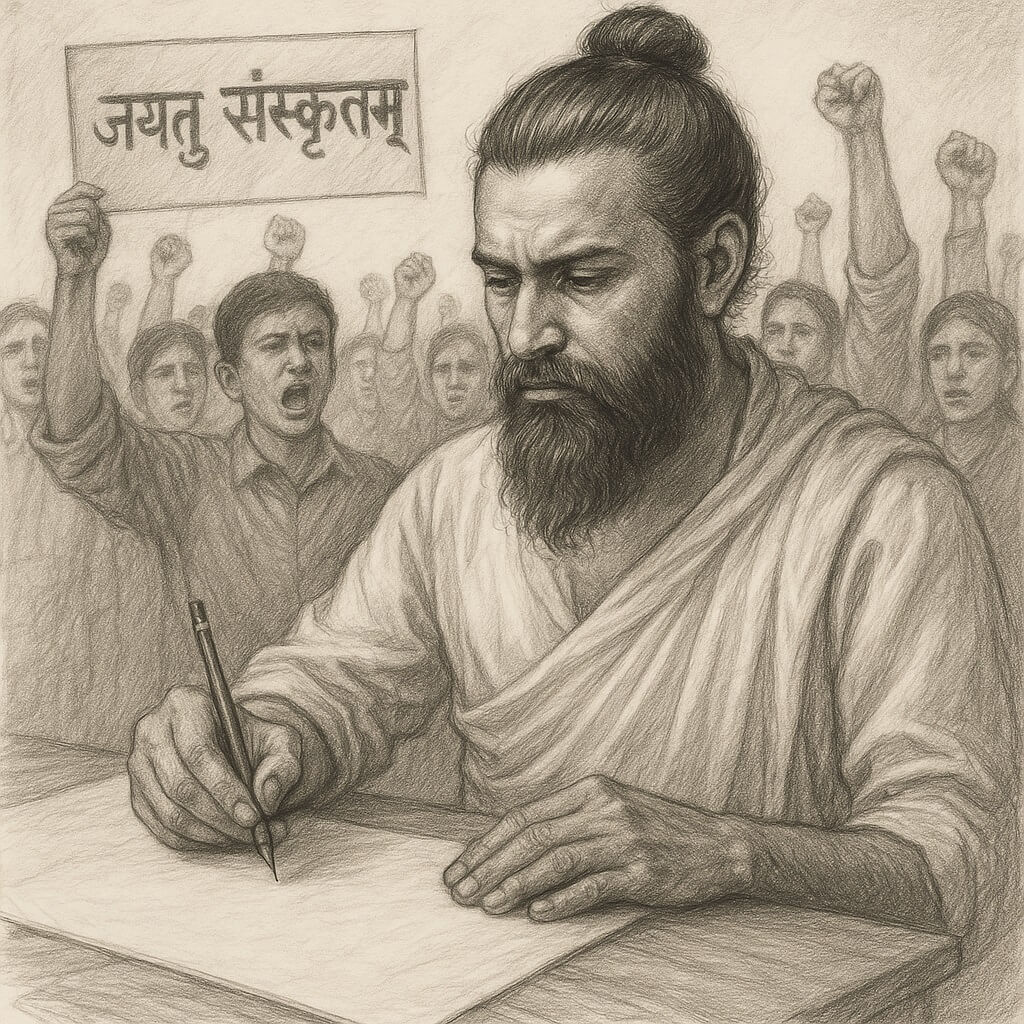
Nepal has witnessed numerous movements over the years, each leaving a lasting impact on its history. One such unforgettable and unique movement is 'Jayatu Sanskritam.' Because of its profound impact, identity, and purpose, Asar 1 is celebrated annually with rallies and programs to commemorate this significant moment in time.
Over the years, 'Jayatu Sanskritam' has become a part of Nepal’s social fabric. It stood not just for freedom, but for protecting values—mental, moral, spiritual, and cultural. This isn’t just a memory—it’s a proud chapter in our national story.
|
Summary
|
The Mission and Timeline
Kicked off on Asar 1, 2004 B.S., the movement was driven by a simple yet bold idea: Sanskrit education should include modern subjects such as English, geography, history, economics, and mathematics.
It continued until Mangsir that same year. At a time when the Rana regime’s control was absolute, Sanskrit students stepped forward with courage and clarity.
More Than Education—A Call for Change
While the movement focused on preserving Sanskrit learning, it also carried a deeper goal: to spark a democratic spirit. It aimed to build a just, equal society free from exploitation.
It stood firmly against the Rana regime’s rule and planted the idea that Nepal needed a government based on the rule of law, not autocracy.
This wasn’t just any student movement—it was Nepal’s very first. These young people demonstrated patience and bravery, even when their lives were in danger. Their determination still inspires.
A Peaceful Strategy with Powerful Impact
This movement didn’t start with protests in the streets. Instead, it began in neighborhoods with spiritual gatherings—reciting the 'Shrimad Bhagavat Saptah.' Students would go door to door asking for support under the name of protecting Sanskrit education.
These recitations turned into powerful tools for spreading democratic ideas. Community members like Sribhadra Sharma, Rajeshwar Devkota, Purna Prasad Brahman, Kamalraj Regmi, and Prem Narayan Sharma Gautam played key roles. Their quiet determination made a loud statement.
When the Public Joined In
Kathmandu’s community stood with the students. Their support gave the movement energy. Public readings not only promoted Sanskrit but also quietly challenged the regime’s control.
Eventually, the Ranas took notice. They began watching the gatherings closely. Suspicion grew, and the regime tried to weaken the movement through deception and threats. However, the students had the people’s trust, making it harder for the movement to be broken.
The crackdown came anyway. Students were scattered. But they didn’t give up. On Mangsir 21, they regrouped and came back stronger, chanting 'Jayatu Sanskritam' again—this time louder.
Exile—and New Beginnings
The very next day, many students were exiled. They weren’t allowed to study, work, or live in Nepal. Some had their homes seized. They made their way to Varanasi, India, where they continued to organize.
Some joined the Nepali Congress after meeting leaders like Bishweshwar Prasad Koirala. A few even became core members and played active roles in Nepal’s democratic push. Others, even if not politically aligned, still fought to end the Rana rule in their own ways.
The Movement’s Place in History
'Jayatu Sanskritam' helped lay the foundation for Nepal’s 2007 B.S. revolution. It followed the sacrifices of 1997 B.S. and kept the fight for democracy alive. Its contribution is undeniable.
Where We Are Now
Sanskrit is taught in top universities around the world. However, in Nepal, it’s still viewed as a ceremonial subject. This, despite Nepal being its birthplace.
Sanskrit encompasses wisdom in philosophy, astrology, economics, and many other fields. While global interest is growing, Nepal’s involvement is shrinking. Government planning—both short and long-term—is still missing.
What the Movement Became
By 2054 B.S., 'Jayatu Sanskritam' marked its golden jubilee. It had overcome many ups and downs. In 2055 B.S., it became a formal institution, now active both in Nepal and abroad. Events continue under its name.
Still, a national push to protect and promote Sanskrit hasn’t taken shape. That’s surprising, especially since NASA has also shown interest in Sanskrit, and some experts view it as an ideal language for computing.
Time to Act—Together
If Sanskrit fades, so does a part of Nepal’s culture and identity. Losing touch with it is like chipping away at our roots. It’s time for everyone—scholars, communities, and the government—to come together.


